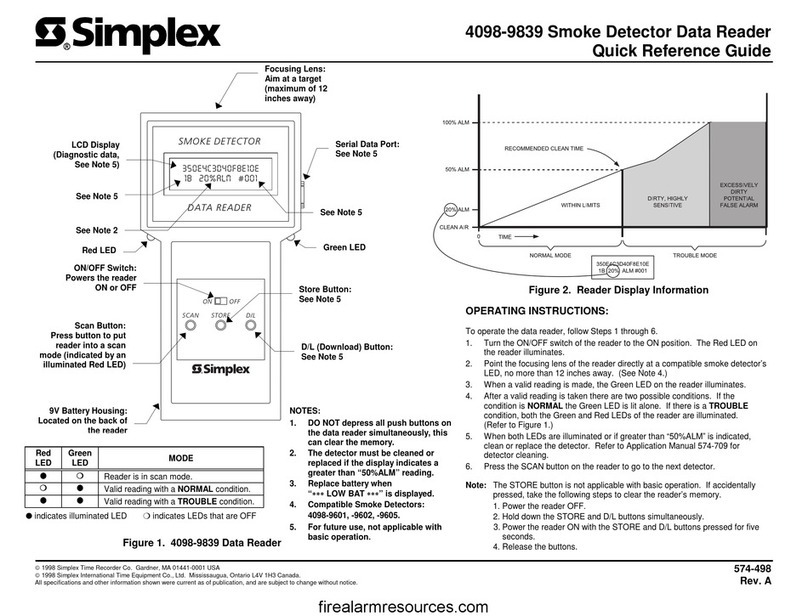
Contents 1 Cautions, warnings, and regulatory information...................................................................................... 3
2 Overview.........................................................................................................................................................4
2.1 Special considerations......................................................................................................................................................................... 4
2.1.1 Special considerations for smoke detectors and sensors.......................................................................................................................4
2.1.2 Smoke detector and sensor applications.....................................................................................................................................................4
2.2 Where to place detectors and sensors.............................................................................................................................................. 4
2.2.1 Correct locations for detectors and sensors...............................................................................................................................................4
2.3 Where not to place detectors and sensors....................................................................................................................................... 7
2.3.1 Incorrect locations for detectors and sensors............................................................................................................................................7
2.4 Principles of operation.........................................................................................................................................................................8
2.4.1 Introduction......................................................................................................................................................................................................... 8
2.4.2 Heat detector operation...................................................................................................................................................................................8
2.4.3 Photoelectric smoke detectors or sensors..................................................................................................................................................9
2.4.4 Carbon monoxide gas detectors or sensors...............................................................................................................................................9
3 4098 Smoke Detectors, Heat Detectors and Bases................................................................................ 10
3.1 4098 Smoke Detectors.......................................................................................................................................................................10
3.1.1 Smoke detector limitations............................................................................................................................................................................10
3.1.2 Specifications.................................................................................................................................................................................................... 10
3.1.3 Mounting requirements................................................................................................................................................................................. 10
3.2 4098 Heat Detectors.......................................................................................................................................................................... 11
3.2.1 Heat detector types.........................................................................................................................................................................................11
3.2.2 Specifications.................................................................................................................................................................................................... 11
3.3 4098 Bases.......................................................................................................................................................................................... 12
3.3.1 Mounting............................................................................................................................................................................................................12
3.3.2 Wiring.................................................................................................................................................................................................................. 14
4 TrueAlarm Sensors and Sensor Bases......................................................................................................19
4.1 Introduction........................................................................................................................................................................................ 19
4.2 4098-9733, 4098-9734, and 4098-9778 spacing............................................................................................................................. 19
4.3 4098 TrueAlarm Sensors................................................................................................................................................................... 20
4.3.1 Special applications.........................................................................................................................................................................................20
4.3.2 Mounting............................................................................................................................................................................................................20
4.4 4098 TrueAlarm Sensor Bases..........................................................................................................................................................20
4.4.1 Specifications.................................................................................................................................................................................................... 22
4.4.2 Setting the address of the base................................................................................................................................................................... 23
4.4.3 Address setting for the 2120 CDT System.................................................................................................................................................24
4.4.4 Address Setting for the 4010, 4020, 4100+, 4100U, 4100ES, 4010ES, 4007ES, 4008, or 4120 System....................................24
4.4.5 Wiring.................................................................................................................................................................................................................. 25
4.4.6 CORC Replacement Instructions..................................................................................................................................................................28
4.5 Setting the Tone for the 4098-9773 CO Sounder Base and the 4098-9772 Sounder Base....................................................... 30
5 Accessories.................................................................................................................................................. 31
5.1 2098-9737 Relay Module wiring....................................................................................................................................................... 31
5.2 4098-9860 Relay Module wiring....................................................................................................................................................... 31
5.3 4098-9822 Relay Module wiring....................................................................................................................................................... 32
5.4 Relay Module installation.................................................................................................................................................................. 32
5.5 Remote LED Module.......................................................................................................................................................................... 33
6 Compatibility and testing........................................................................................................................... 34
6.1 Compatibility for 4098 Detectors and Detector Bases.................................................................................................................. 34
6.2 Compatibility for 4098 Sensors and Sensor Bases........................................................................................................................ 34
6.3 Maintenance and testing...................................................................................................................................................................35
6.3.1 Maintenance..................................................................................................................................................................................................... 35
6.3.2 Testing.................................................................................................................................................................................................................35
6.3.3 Preferred method of testing smoke detectors or sensors....................................................................................................................36






























